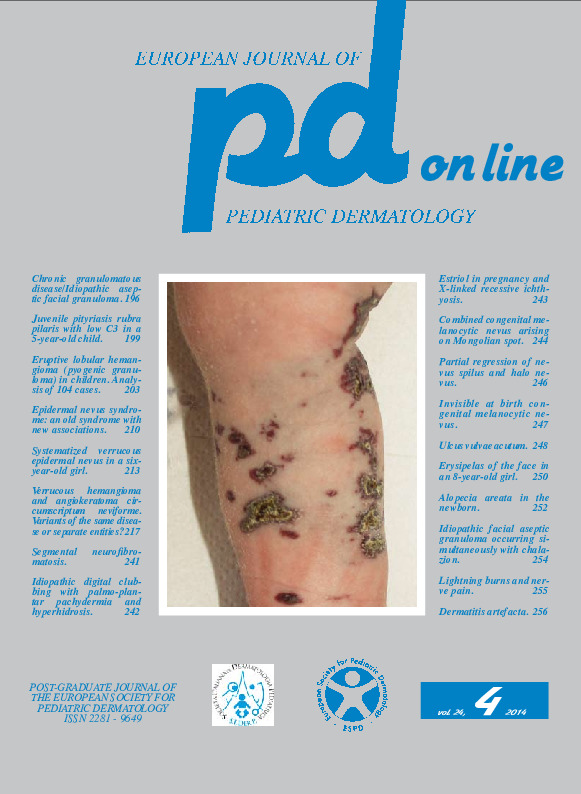Alopecia areata in the newborn.
Downloads
How to Cite
Chieco P. 2014. Alopecia areata in the newborn. Eur. J. Pediat. Dermatol. 24 (4):252-53.
pp. 252-253
Abstract
Alopecia areata, although rarely, can be observed in the first months of life (3) or even at birth (2, 4, 5). At this time of life alopecia areata can occur both in the patch and universal form. In the patch form the diagnosis is easy when there are clinically rounded areas of alopecia or at least exclamation point hairs (6), but these are not always present as demonstrated by our two cases. In this eventuality the differential diagnosis of alopecia areata from hereditary alopecia can be difficult, especially in the universal forms. When the classical findings of alopecia areata are lacking, the diagnosis can be made taking into account the variable clinical course of alopecia areata alternating phases of more or less obvious regrowth, spontaneous or related to therapy, and phases of recurrence. In the patch forms the presence of round areas (Fig. 2) and their multiplicity can help. The patch form only differs from hypotrichotic nevus or congenital triangular alopecia (1) mainly because in the latter the hair is present but thinner. The absence of follicular keratosis in alopecia areata is useful to differentiate it from monilethrix in the patch form and from hypotrichosis with keratosis pilaris in the universal form. Ectodermal dysplasia differs from alopecia areata for the characteristic changes of the teeth and sweat glands.Keywords
alopecia areata, newborn

